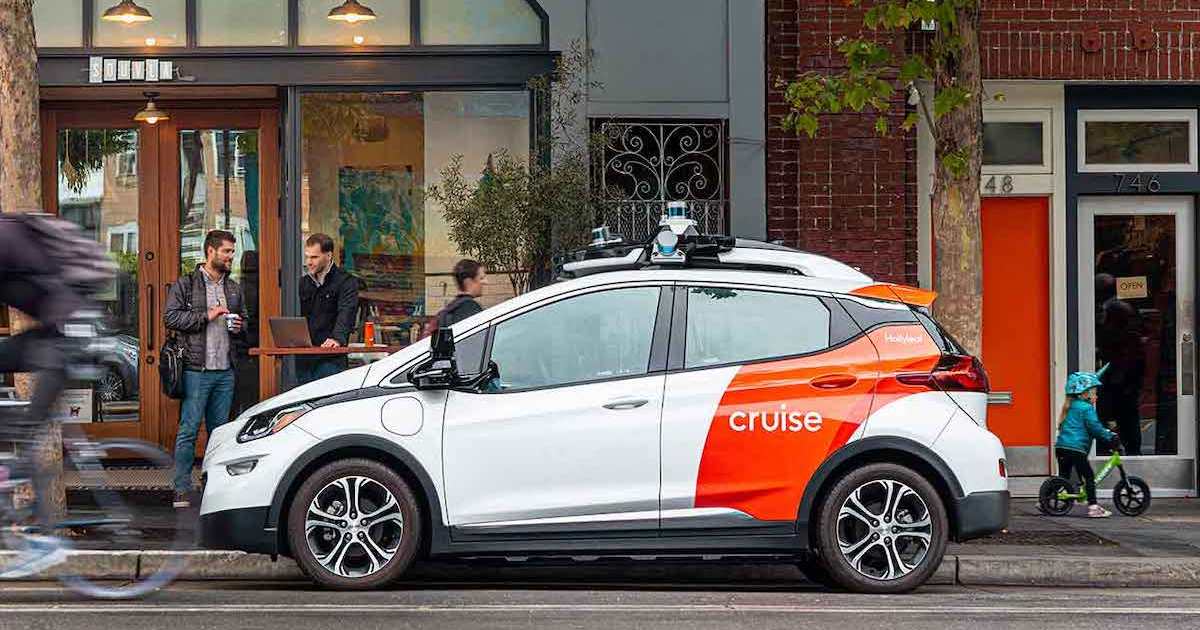
A self-driving car operated by General Motors-backed Cruise got stuck on Tuesday when it drove into a patch of wet concrete.
The incident happened in San Francisco and occurred just days after California’s Public Utilities Commission made a landmark decision when it voted to allow autonomous-car companies Cruise and Waymo to expand their paid ridesharing services in the city to all hours of the day instead of just quieter periods.
While the decision has been heralded as a breakthrough moment for the industry, this latest incident shows that the technology still has some issues when it comes to the safe and responsible navigation of public roads.
San Francisco resident Paul Harvey snapped a photo of the stuck Cruise car and shared it with local news outlet San Francisco Gate.
“It thinks it’s a road and it ain’t because it ain’t got a brain and it can’t tell that it’s freshly poured concrete,” Harvey told the publication, adding that the self-driving car had no passengers inside at the time.
Before the concrete had a chance to dry, Cruise workers arrived at the scene and hauled the car out and back onto the road. Digital Trends has reached out to Cruise to find out how the car ended up in the concrete and we will update this article when we hear back.
In another troubling incident in recent days, social media posts suggested some of the autonomous cars on San Francisco’s streets were causing traffic jams, with footage showing at least 10 stationary Cruise vehicles with their hazard lights on in the city’s North Beach neighborhood, close to where the Outside Lands music festival was taking place, CNN reported.
Responding, Cruise said that the festival “posed wireless bandwidth constraints causing delayed connectivity to our vehicles,” adding that it was “actively investigating and working on solutions to prevent this from happening again,” while also apologizing for the mishap.
Waymo’s autonomous cars have also been involved in various incidents during drives on public roads. In April, for example, the vehicles’ sensors and cameras were unable to handle particularly dense fog, prompting some to pull over. One stopped in the middle of a street, baffling nearby human motorists and causing a traffic jam. To deal with the issue, Waymo has been developing its fifth-generation imaging radar, which uses microwaves instead of light to help it see through fog and mist, while a new cleaning system had been designed to keep the cars’ sensors free of dirt.
In comments reported by CNN, Aaron Peskin, president of San Francisco’s Board of Supervisors, said this week: “They’re deploying hundreds of cars on our streets. They should take a timeout and a pause, until they perfect this technology.”
Cruise described last week’s decision by the Public Utilities Commission as a “historic industry milestone,” adding that the firm will continue to work closely with regulators, first responders, and others, while Waymo called the permit “the true beginning” of its commercial operations in San Francisco.
With some in the city clearly pushing back against the loosening of regulations for autonomous cars, Cruise and Waymo will be keen to keep such incidents to a minimum on order to bring the skeptics onside.
Editors’ Recommendations
Services Marketplace – Listings, Bookings & Reviews
